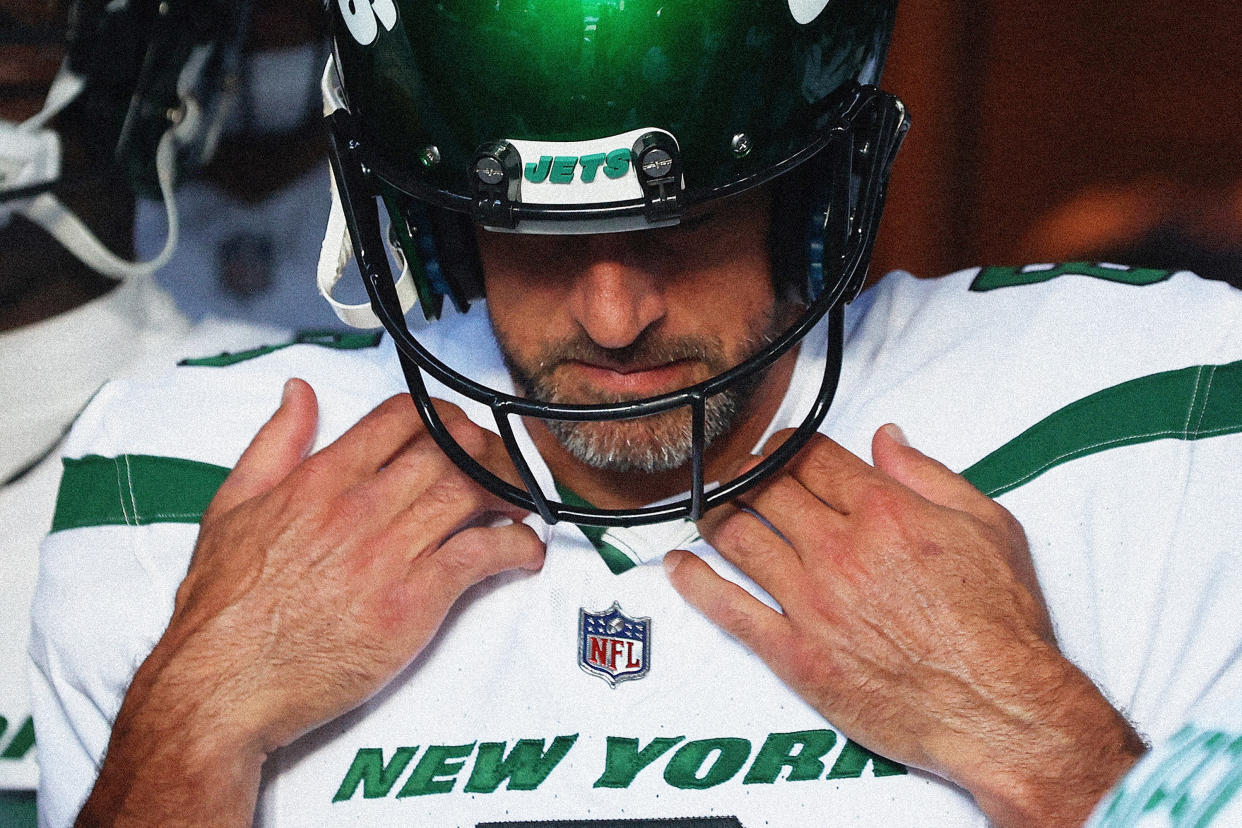Aaron Rodgers tore his Achilles tendon. Here's what to know about his season-ending injury.

Sports fans were eager to see former Packers quarterback Aaron Rodgers make his New York Jets debut — only to see it end as quickly as it started. Though he didn’t initially appear too injured when he was sacked by the Buffalo Bills’ Leonard Floyd just four plays into Monday night’s game, things took a turn Tuesday, when it was reported that Rodgers had torn his left Achilles tendon.
"I hurt for Aaron because I know how much he's invested in this," head coach Robert Saleh said after the game. "I'm still going to say a prayer, I'm still going to hold out hope. My heart's with Aaron right now, and nowhere else."
Unfortunately for the Jets, confirmation of the tear more than likely means Rodgers will be out for the entire season — although other athletes have recently had successful comebacks after suffering the same fate, including Los Angeles Rams running back Cam Akers, NBA player Kevin Durant and Russian gymnast Artur Dalaloyan.
Here’s what to know about the injury.
What is an Achilles tendon?
“The Achilles tendon connects muscles in your calf and lower leg to your heel bone, and it can only stretch so far,” according to VeryWell Health. It gets its name from Achilles, the figure in Greek mythology whose weakness was in the back of his ankle. As the myth goes, Achilles was dipped into the immortality-making River Styx held up by his ankles, which never touched the water.
When the Achilles tendon is stretched beyond its limits, it becomes inflamed, a condition called tendinitis, or it tears. Stress or injury to the tendon can cause discomfort to severe pain.
How do Achilles tendon injuries happen?
New York City podiatrist Polina Zaydenberg, who did not treat Rodgers, tells Yahoo Life that “abrupt movement” can cause an Achilles tendon injury. It’s possible to have a “complete rupture” of the tendon, as Rodgers had, or a “partial rupture.”
Though it’s unclear exactly what happened to Rodgers, Zaydenberg notes that, in general, “certain arthritic conditions predispose you to Achilles tendon ruptures.” The antibiotic fluoroquinolone can also predispose you to tendon ruptures, she notes.
According to the Cleveland Clinic, Achilles tendon injuries tend to be more common in people who do not train regularly and then exercise at a high intensity, as opposed to well-trained athletes.
How are Achilles tendon injuries treated?
“The Achilles tendon is the biggest tendon in the body, and if it’s a complete rupture, typically that’s a surgical correction,” explains Zaydenberg. She says that if all goes well, there is a two-month minimum recovery period following surgery.
That doesn’t bode well for anyone who was hoping to get Rodgers back out on the field.
“A person wouldn’t be able to walk,” Zaydenberg says of the recovery period. “A young person may be able to use crutches, and an older person or person who couldn’t tolerate crutches could use a wheelchair.”
But as Ned Amendola, a Duke University orthopedic surgeon who specializes in sports medicine, told Yahoo Sports last year, “It used to be a career-altering injury. There was a point where when you had a torn Achilles, returning to an elite level was very difficult.” But Rodgers may be in luck — not for this season but for those to come, thanks to changes in the technology of surgery and other recovery tools. It's what dedicated fans are hoping, anyway.
